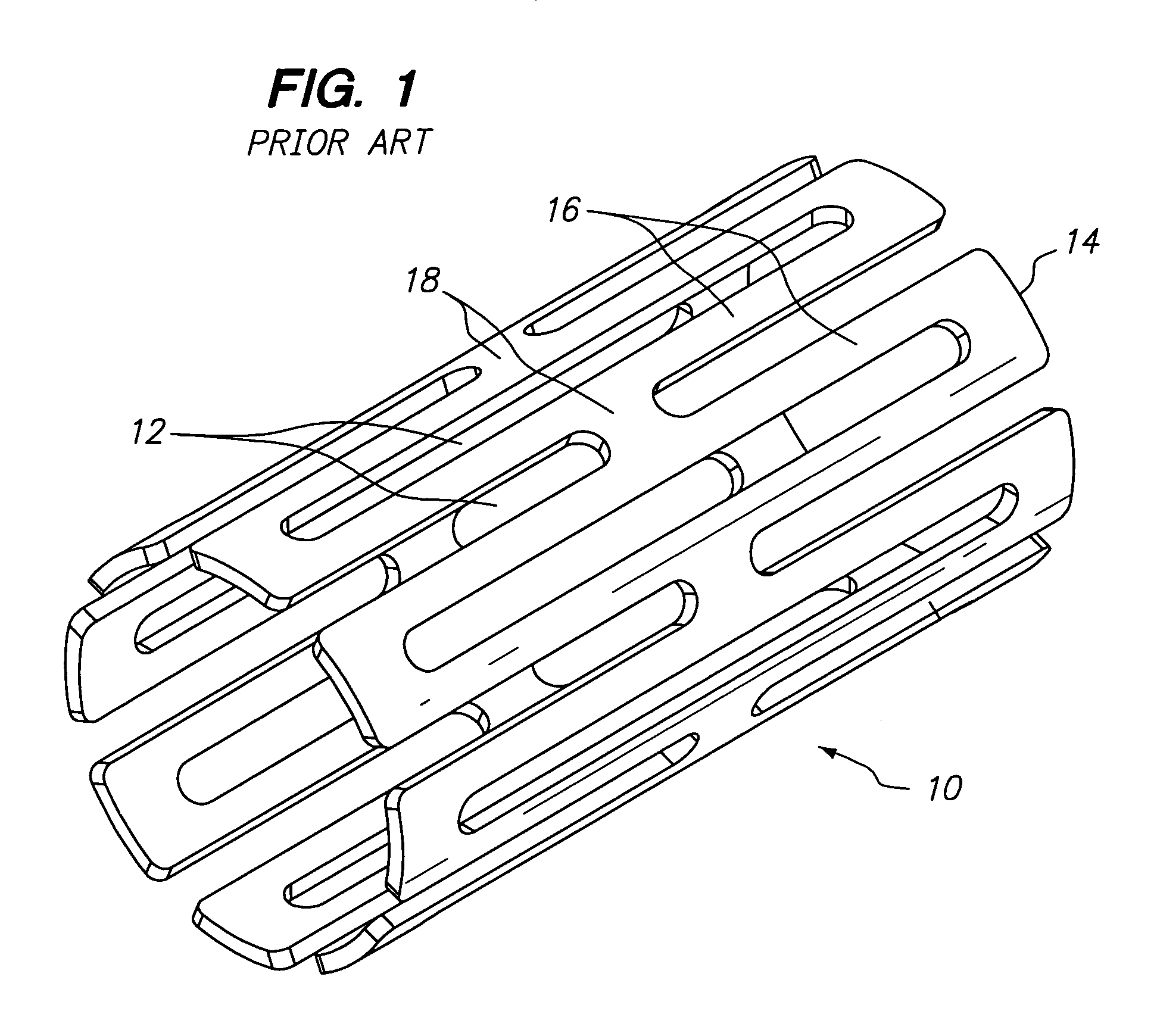Expandable medical device with tapered hinge
a medical device and hinge technology, applied in the field of expandable medical devices, can solve the problems of destructive lumen tissue, difficult to securely crimp the most known stent onto the delivery catheter balloon, and higher rates of restenosis
- Summary
- Abstract
- Description
- Claims
- Application Information
AI Technical Summary
Benefits of technology
Problems solved by technology
Method used
Image
Examples
Embodiment Construction
[0033]Referring now to FIGS. 2A and 2B, there is shown a planar view of a representative portion of an unexpanded tissue-supporting medical device 200. The expandable medical device 200 includes a series of axial slots 210 formed in a cylindrical tube (not shown). Each axial slot 210 is displaced radially from the slots in the adjacent rows of slots by approximately 0.010 inches. The plurality of axial slots 210 define a plurality of elongated beams 220. The plurality of elongated beams 220 are interconnected by a hinge 250 disposed at one end and a locking area disposed at the other end. A U-shaped link 270 interconnects adjacent rows of beams 220.
[0034]The elongated beam 220 further includes a pawl 230 having a distal end 235 disposed at one end of the elongated beam 220 and a plurality of teeth 240 disposed at the other end opposite the pawl 230. The elongated beam 220 further includes a hinge 250 adjacent the pawl 230. The hinge 250 further contains a first end 252 and a second ...
PUM
 Login to View More
Login to View More Abstract
Description
Claims
Application Information
 Login to View More
Login to View More - R&D
- Intellectual Property
- Life Sciences
- Materials
- Tech Scout
- Unparalleled Data Quality
- Higher Quality Content
- 60% Fewer Hallucinations
Browse by: Latest US Patents, China's latest patents, Technical Efficacy Thesaurus, Application Domain, Technology Topic, Popular Technical Reports.
© 2025 PatSnap. All rights reserved.Legal|Privacy policy|Modern Slavery Act Transparency Statement|Sitemap|About US| Contact US: help@patsnap.com



